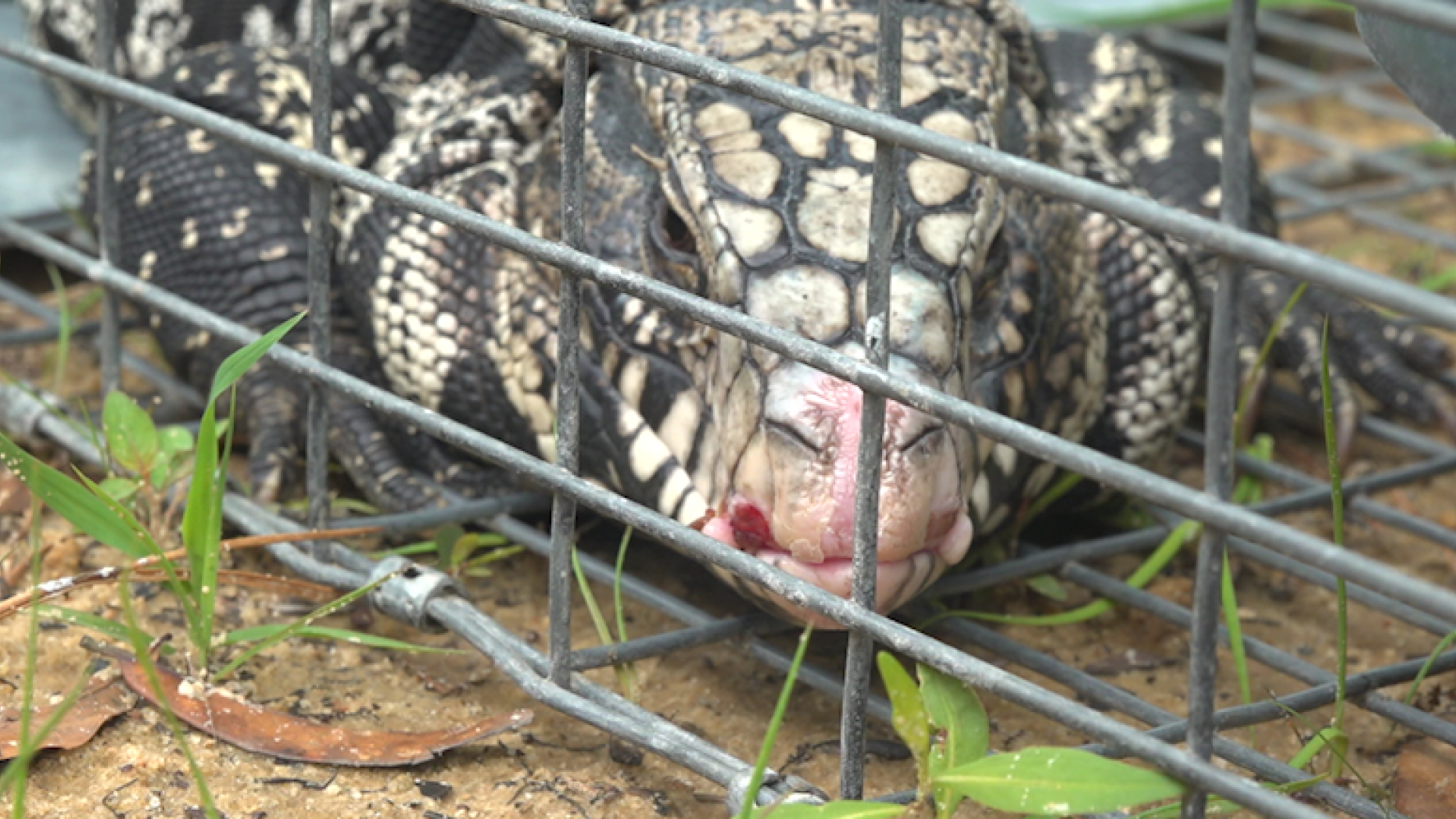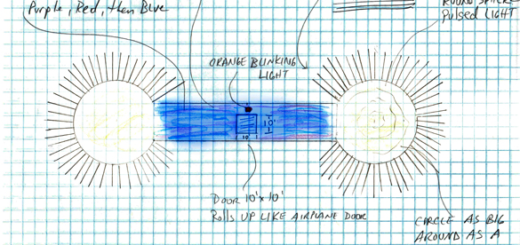Southern wildlife in jeopardy as giant tegu lizards invade Georgia and Florida

REIDSVILLE, Ga. — An invasive, giant, and dangerous lizard is creeping its way through southeast Georgia and beyond.
The Argentine black and white tegu lizards are originally from South America, and now they are wreaking havoc on wildlife throughout the South.
Daniel Sollengberge, senior wildlife biologist with the Georgia wildlife, said they never knew there was a population established in the wild until recently.
“We presume that the animals started as the result of escaped or released pets in the area… there really common in the pet trade,” Sollengberger said.
After over a dozen sightings of the lizards in southeast Georgia, Tegus have become known as an invasive species particularly in Toombs and Tattnall counties.
Georgia Southern professor, Dr. Lance Mcbrayer studies the evolution of lizards and leads the U.S Geological Survey team.
“Already in 2020 we’ve caught five animals at this site right here,” Mcbrayer said.
The lizards can grow up to four feet long. As the number of lizards in southeast Georgia continue to increase, the geological survey team is racing to put down traps.
The traps are placed about 100 meters apart and members of the Geological team check them daily.
Daniel Haro is a part of the geological team and works in the field about three to four times a week. “In general, right now, we have 85 and we’re going to get to 90… so, this week I’m hoping to place five more,” Haro said.
According to Georgia wildlife, the lizards don’t attack people unless provoked. However, with their strong jaws and sharp teeth, they will eat anything they can put in their mouth, especially eggs.
“Whereby they’re damaging our gopher tortoise populations or bobwhite quail populations or turkey populations…the animal walks around and it hunts up nests on the ground,” Mcbrayer said.
On top of that, tegu lizards can lay up to 40 eggs, and once they hatch, they will be around 6 to 10 inches long. “That’s our real concern… that there could be a very rapid increase in the number of tegus in just a few years,” Mcbrayer said.
The crew in southeast Georgia has not caught a juvenile tegu yet but, “all the habitat and the size of the animals we’re catching suggest that they’re reproducing – so that’s a problem,” Mcbrayer said.
Tegu lizards have established themselves as invasive species in Florida, too. “There’s at least three populations in Florida… the north side of the Everglades…one inland in St. Pete from Tampa … and now one in the Panhandle,” Mcbrayer said.



 Creators of mankind
Creators of mankind Description of “Tall white aliens”
Description of “Tall white aliens” Where they came from?
Where they came from? About hostile civilizations
About hostile civilizations The war for the Earth
The war for the Earth “Tall white aliens” about eternal life
“Tall white aliens” about eternal life Video: “Nordic aliens”
Video: “Nordic aliens” Aliens
Aliens Alien encounters
Alien encounters The aliens base
The aliens base UFO
UFO Technology UFO
Technology UFO Underground civilization
Underground civilization Ancient alien artifacts
Ancient alien artifacts Military and UFO
Military and UFO Mysteries and hypotheses
Mysteries and hypotheses Scientific facts
Scientific facts


















